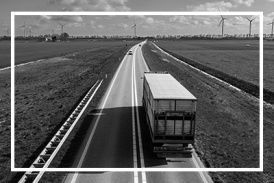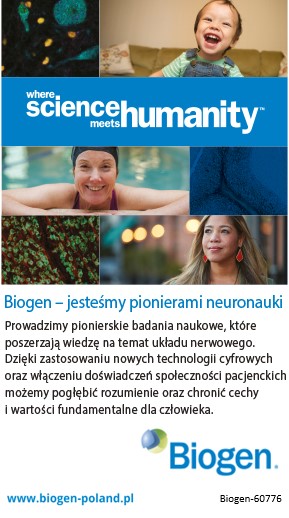Microplastic Free Clothing Market to Hit USD 7,672 Million by 2035, Growing at 12.5% CAGR States Fact.MR
Analysis of Microplastic Free Clothing Market Covering 30+ Countries Including Analysis of U.S., Canada, U.K., Germany, France, Nordics, GCC countries, Japan,
MD, UNITED STATES, May 31, 2025 /EINPresswire.com/ -- The global Microplastic Free Clothing Market is expected to reach USD 7,672 million by 2035, up from USD 2,100 million in 2024. During the forecast period, the industry is projected to register at a CAGR of 12.5%.Microplastic-free clothes are gaining more and more importance in the market as the awareness of environmental issues set in by those regulations across the globe. Microplastics from synthetic textiles upon washing became possibly the largest pollutant, enforcing stricter regulations by governments mainly in Europe and North America. On the other hand, the proposed restriction on microplastic emissions under the REACH framework of the EU is essentially fast-tracking the development of sustainable textile alternatives and pushing apparel brands to reimagine their materials and methods of production.Consumers, largely concentrated in cities and younger age groups, are beginning to favor more environmental options such as biodegradable and traceable kinds of clothes. Responding to this demand, a number of brands have introduced collections made from organic cotton, hemp, bamboo, and regenerated cellulose fibers such as Tencel, which promote lesser release of microplastics. Most of these are highly advertised with sustainability certifications, and many brands are also pursuing new technologies such as lifecycle analysis and blockchain-based tracking to satisfy growing demand for transparency and environmental accountability.
For More Insights into the Market, Request a Sample of this Report:https://www.factmr.com/connectus/sample?flag=S&rep_id=10785
At a longer horizon, the market is positioned to grow in the Asia-Pacific region due to fast urbanization and institutional adoption, particularly via public procurement programs through schools, hospitals, and government sectors, which are fostering demand for microplastic-free clothing.
Key Takeaways from Market Study
The microplastic-free clothing market is projected to grow at 5% CAGR and reach USD 7,672 million By 2035
The market created an absolute $ opportunity of USD 5,309 million between 2025 to 2035
North America is a prominent region that is estimated to hold a market share of 3% in 2035
Predominating market players are Harvest & Mill, Pact, Kowtow, Community Clothing, Water from Mars, MATE the Label, Lucy & Yak, Toad&Co, The Hemp Trading Company, and Another Tomorrow.
North America is expected to create an absolute $ opportunity of USD 1,096.6 million
“Growing environmental awareness, stricter regulations on microplastic pollution, and rising demand for sustainable, non-shedding textiles are driving strong growth in the Microplastic-Free Clothing Market. Brands and institutions are increasingly adopting eco-friendly apparel to meet sustainability goals and regulatory compliance” says a Fact.MR analyst.
Market Development
Top apparel brands that have felt the market shifts and have launched eco-conscious collections while investing in a new type of fiber that will not shed much microplastic. Alliances with NGOs, a landscape for fabric treatments, and digital tools for tracing the source and movement of the microplastic-free fiber are all enhancing the market's credibility. Governments in both Europe and the Asia-Pacific arena have assisted within this initiative of green procurement, bolstering demand for these goods. The concept of the closed-loop recycle approach with circular fashion is becoming widespread, giving the microplastic-free clothing facet a big voice in the future direction of environmentally aware clothing production.
For example, in December 2024, Heriot-Watt University (HWU) introduced the world's first microplastic grading system for fashion. This system aims to assess and mitigate microplastic pollution from textiles, addressing one of the pressing environmental challenges associated with the fashion industry.
Get Customization on this Report for Specific Research Solutions :https://www.factmr.com/connectus/sample?flag=S&rep_id=10785
More Valuable Insights on Offer
Fact.MR, in its new offering, presents an unbiased analysis of the the micro-plastic free clothing market, presenting historical data for 2020 to 2024 and forecast statistics for 2025 to 2035.
BY Material Type (Natural Fibers (Organic Cotton, Hemp, Linen, Others), Regenerated Cellulose Fibers, Animal-Based fibers), BY Clothing Type (Everyday Apparel, Sportswear, Outdoor & Travel Clothing, Undergarments, Kids & Baby Clothing), BY Distribution Channel (E-commerce (Direct-to-Consumer), Retail Stores, Subscription & Rental Service, B2B and Wholesale).
Key Companies Profiled-
Key players in the microplastic free clothing industry are Harvest & Mill, Pact, Kowtow, Community Clothing, Water from Mars, MATE the Label, Lucy & Yak, Toad&Co, The Hemp Trading Company, Another Tomorrow, and other players.
Industry News-
In September 2024, British climate Tech Company Matter and Paradise Textiles, the material science and innovation hub of the Alpine Group, announced a collaborative project to bring Matter's Regen™ for Textile Production to market. This is the world's first microfibre filter specifically designed for textile manufacturers, aiming to combat textile pollution by capturing microfibres during the manufacturing process.
In July 2023, the Ministry of Textiles established an Environmental, Social, and Governance (ESG) Task Force to promote sustainability in the textile sector. The task force has convened multiple times to discuss and implement initiatives aimed at promoting ESG principles, including reducing environmental impact and promoting sustainable practices in textile manufacturing.
Explore More Related Studies Published by Fact.MR Research:
The global Therapeutic Play Kits market is expected to reach USD 1,639 million by 2035, up from USD 559.6 million in 2024. During the forecast period (2025 to 2035), the industry is projected to expand at a CAGR of 10.2%.
The global hangover rehydration supplements market is projected to expand from USD 1.1 billion in 2025 to USD 3.8 billion by 2035, demonstrating a robust CAGR of 13%.
About Fact.MR:
We are a trusted research partner of 80% of fortune 1000 companies across the globe. We are consistently growing in the field of market research with more than 1000 reports published every year. The dedicated team of 400-plus analysts and consultants is committed to achieving the utmost level of our client’s satisfaction.
Contact:
11140 Rockville Pike
Suite 400
Rockville, MD 20852
United States
Tel: +1 (628) 251-1583
Sales Team: sales@factmr.com
Follow Us: LinkedIn | Twitter | Blog
S. N. Jha
Fact.MR
+1 628-251-1583
email us here
Legal Disclaimer:
EIN Presswire provides this news content "as is" without warranty of any kind. We do not accept any responsibility or liability for the accuracy, content, images, videos, licenses, completeness, legality, or reliability of the information contained in this article. If you have any complaints or copyright issues related to this article, kindly contact the author above.
Why Founders Shouldn’t Be the Ones Running the Sales Team—Especially in Wellness Businesses
City Shift Finance Launches Tool for Cost of Living, Buy vs Rent, and Relocation Support
From $80 and a Basement Apartment to Entrepreneur of the Year at the 2025 CanadianSME Awards
Kalendarium
Więcej ważnych informacji
 Jedynka Newserii
Jedynka Newserii

 Jedynka Newserii
Jedynka Newserii

Transport

Polska przeciwna przedłużeniu umowy UE–Ukraina o transporcie drogowym. Uderza ona w krajową branżę transportową
Parlament Europejski większością głosów poparł przedłużenie umowy o transporcie drogowym między Unią Europejską a Ukrainą do końca 2025 roku. Zdaniem polskich europosłów, którzy głosowali przeciw, podtrzymanie liberalizacji przewozów drogowych przyczyni się do dalszego obniżenia konkurencyjności polskich firm transportowych. W przeciwieństwie do ukraińskich przewoźników muszą one spełniać szereg unijnych wymogów. Polska delegacja planuje przedstawić swoje stanowisko europejskiemu komisarzowi ds. zrównoważonego transportu i turystyki.
Transport
M.Kobosko: Wszyscy zapłacimy za eskalację między Izraelem a Iranem. Kraje UE powinny robić więcej dla budowy swojego własnego bezpieczeństwa

– Mrzonki o armii europejskiej są mrzonkami, to trzeba sobie jasno powiedzieć. Każdy z krajów członkowskich Unii Europejskiej musi, i to się na szczęście już dzieje, nie tylko myśleć i mówić, ale też robić coraz więcej dla budowy swojego własnego bezpieczeństwa w koordynacji wspólnej – uważa Michał Kobosko, poseł do Parlamentu Europejskiego z Polska 2050. W kontekście światowych konfliktów, w tym na linii Izrael–Iran, jego zdaniem Polska powinna się skupić na współpracy zarówno ze Wspólnotą, jak i Stanami Zjednoczonymi.
Muzyka
Trwający Festiwal Mozartowski przyciąga tłumy melomanów. To jedno z najważniejszych wydarzeń w stolicy

Artystka zaznacza, że za sprawą Warszawskiej Opery Kameralnej jeszcze przez dwa tygodnie Warszawa będzie rozbrzmiewać Mozartem. Kolejna edycja festiwalu poświęconego temu wybitnemu kompozytorowi zajmuje ważne miejsce w kulturalnym kalendarzu stolicy i przyciąga tłumy melomanów. A przed nimi jeszcze sporo atrakcji. Alicja Węgorzewska szczególnie zaprasza na dwie premiery, jedną skierowaną do młodych odbiorców, drugą – dedykowaną koneserom. Niezwykle ciekawie zapowiada się także nowy sezon artystyczny w WOK-u. Twórcy już pracują nad kolejnymi spektaklami i nagrywają nowe płyty.
Partner serwisu
Szkolenia

Akademia Newserii
Akademia Newserii to projekt, w ramach którego najlepsi polscy dziennikarze biznesowi, giełdowi oraz lifestylowi, a także szkoleniowcy z wieloletnim doświadczeniem dzielą się swoją wiedzą nt. pracy z mediami.









.gif)

 |
| |
| |
|